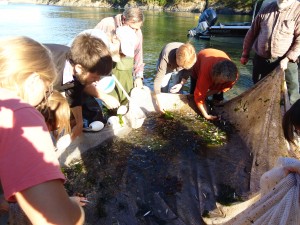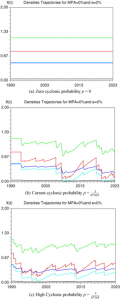Coral Reef – Case Study
Once discussing sustainability science with the class and writing the previous blog about what sustainability science is I found a case study, which encompasses the sustainability of coral reefs and marine ecosystems.
People love to view the beautiful and rare ecosystems around the world, the mystery of a rainforest or the beauty of marine reefs. However, the constant tourism and destruction is destroying these rare ecosystems; but I’m focusing on the Abore Reef reserve in New Caledonia. Doyen et al. researched how over exploited marine ecosystems can be sustained by being transformed into a protected area (2007). In summary, reserves are very beneficial because they restore fisheries, ecosystems, and conserve biodiversity.
According to the National Research Council (NRC) and the National Academy of Sciences (NAS) the last 10 years spent developing ideas about sustainable science have been influenced more by political rather than scientific perceptions (1999). The economical benefits tend to cause complications for scientific purposes. However, marking a location a protected area shows a positive effect with results of increased fish size, abundances of spawning, and surrounding the reserve having increased spillover of recruited stages and larval dispersion (Doyen et al. 2007). The coral reef ecosystem is one where many organisms use the coral for shelter and sanctuary from predators so when the reef is negatively affected the whole ecosystem suffers.
Major constrains to marine ecosystems, such as coral reefs, are over exploitation and harsh weather, such as cyclones. Cyclones increase oscillations of coral and trophic densities in relation to the refuge effect. Increased cyclone frequencies cause concerns with organism interactions which could lead to trophic cascades. The effects of various cyclone frequencies are demonstrated in figure 1 below.
Time in this figure is for the next 30 years if there were no fishing efforts. The top graph (a) is if no cyclones occur, middle graph (b) a cyclone every 6 years, and the bottom graph (c) a cyclone every 4 years. The black line indicating piscivores, dark blue-carnivores, green-herbivores, light blue-small prey, red-coral state.
When looking at reefs under current cyclonic frequencies (1 cyclone every 6 years) with 20% harvesting efforts and a reef that is not protected results are similar showing carnivores and herbivores will flat line.  However, with a protected coral reef there is a much higher recovery rate because the biodiversity is significantly better. If the cyclone frequency was to increase (1 cyclone every 4 years) with 20% harvesting efforts and a coral reef is not protected carnivores and herbivores would be over exploited leading to a significant decrease in recovery rate due to a drop in biodiversity. If a coral reef is under protection the biodiversity would be good and the ecosystem would have a higher recovery rate.
After discussing case studies the class took a trip to Lopez Island to assist with some research being conducted on juvenile Chinook salmon.  Beam Reach students along with local volunteers congregated to assist in bringing in the net once it was filled with fish. We collected sand lance, juvenile Chinook, and herring. The Chinook were sedated and then underwent a process called a lavage. Measurements of individual fish were taken, stomach contents preserved, quantity of each species noted, and tail clips for future fin biopsies. This picture shows the group of us picking out the desired fish from the second haul (3 hauls are allowed in one day’s efforts). The continued research conducted on Lopez Island and surrounding areas helps to sustain the endangered Chinook salmon population along with the organisms below (sand lance) and above (killer whales) in the food chain.
Beam Reach students along with local volunteers congregated to assist in bringing in the net once it was filled with fish. We collected sand lance, juvenile Chinook, and herring. The Chinook were sedated and then underwent a process called a lavage. Measurements of individual fish were taken, stomach contents preserved, quantity of each species noted, and tail clips for future fin biopsies. This picture shows the group of us picking out the desired fish from the second haul (3 hauls are allowed in one day’s efforts). The continued research conducted on Lopez Island and surrounding areas helps to sustain the endangered Chinook salmon population along with the organisms below (sand lance) and above (killer whales) in the food chain.
 The data in the case study and ongoing research on Lopez clearly demonstrate how key sustainability science is to preserving life in various ecosystems. It is not only about one organism or species, but the pressures people put on ecosystems as well as how different organisms interact with one another. Between the case study and research on Lopez people are discovering new information that brings us that much closer to understanding the various levels of the food chain and the ecosystem (shown in the picture to the left).
The data in the case study and ongoing research on Lopez clearly demonstrate how key sustainability science is to preserving life in various ecosystems. It is not only about one organism or species, but the pressures people put on ecosystems as well as how different organisms interact with one another. Between the case study and research on Lopez people are discovering new information that brings us that much closer to understanding the various levels of the food chain and the ecosystem (shown in the picture to the left).




 Twitter
Twitter LinkedIn
LinkedIn Facebook
Facebook